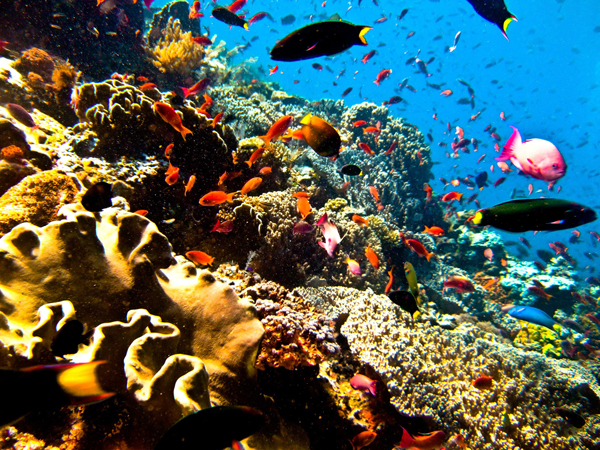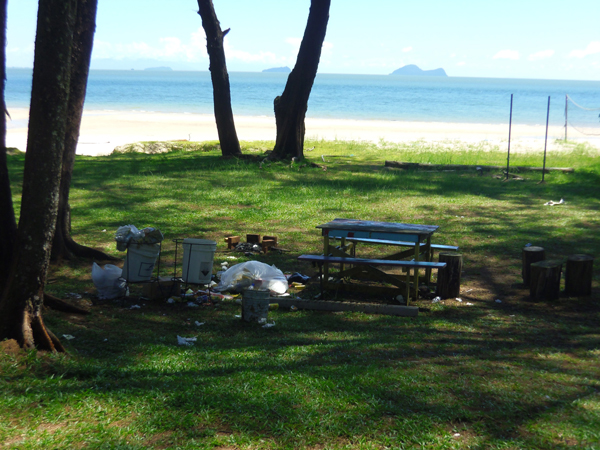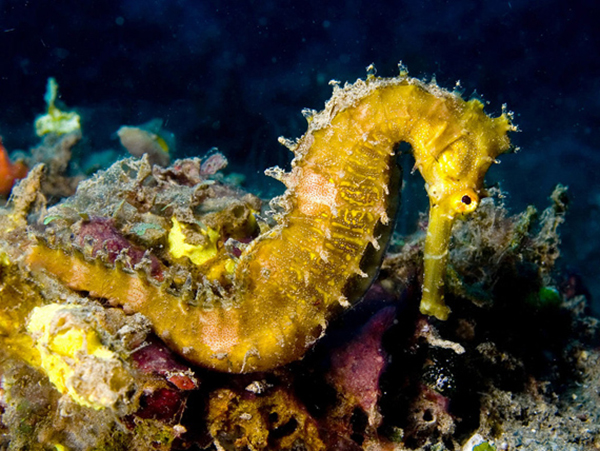
Coral reefs make up less than 0.1 per cent of ocean floors yet support 25 per cent of all marine life.
SEVENTY per cent of our world’s surface is ocean yet what do we really know about it? In 2002, the United Nations (UN) pledged to produce regular assessments of our seawaters. This seems to have been re-prioritised for finally, last year, the UN ‘World Ocean Assessment’ was published in 55 chapters, covering 1,400 pages.
It is difficult to visualise how UN member countries will seriously view this assessment. It covers all aspects of the oceanic world from climate change to seaweed, and from deep oceanic life to tourist developments in shallower coastal waters. It is all-embracing.
The main messages in this report are:
- l Our world is fast running out of time to achieve sustainable development of seawater, resulting in a loss of vital goods and services that our oceans provide.
- l The complexity of the ecosystems of the various oceans needs us all to keep an all-roving eye to ensure sustainable management.
- l Solutions do exist for many problems and these have been implemented in some parts of our world.
Threats to our oceans
There is now little doubt that climate change has already begun to increase ocean temperatures and that our oceans’ ability to absorb atmospheric carbon dioxide has in turn increased the acidity of our seawater.
These changes in ocean temperature will push tropical hurricanes and storms nearer to the poles.
In so doing, considerable damage will be done to plankton growth, on which all marine life depends for sustenance, thus forcing fish migrations away from traditional fishing grounds. It will also threaten low-lying coasts with more frequent inundations of storms to add to already rising sea levels.
Fish stocks
Fish stocks and other marine have taken a plunge for the worse through overfishing of some species that are in the grip of consumer market demands. The University of British Columbia, Canada recently published a report stating that 109 million tonnes of fish products a year are extracted from our oceans to supply much of our world’s population.
Global catches are, however, falling at an average rate of one million tonnes per year as fish stocks are decreasing. In some places, these ever-increasing historic trends have been reversed by national jurisdictions on the amounts of fish landed.
For instance, in the United Kingdom, fishing quotas were introduced on the amount of saleable landings of cod taken from the North Sea and in Icelandic waters to prevent overfishing of a diminishing species.
Traditional British cod and chips is back on the menu in fish and chip shops this year. This embargo on cod landings has been lifted slightly this year. Similarly, fish quotas have been lifted on other species of fish landed at Britain’s largest fishing port at Newlyn, in West Cornwall, England.

Rubbish left behind by picnickers is seen on a Santubong beach.
Unseen dangers to marine life
Harmful chemicals from raw sewage and run-off from the ever-increasing use of fertilisers and pesticides together with industrial effluent add to the diminishing quality of our oceans. These external inputs lead to dead zones for marine life.
Plastic floating around our oceans take tens of years to degrade and their nanoparticles are found embedded in the smallest of marine organisms. Currently there are 150 million tonnes of plastic in the sea and this is increasing at the rate of eight million tonnes a year.
Inevitably, the coastal areas with the highest levels of biodiversity attract tourists. Visitors to coastal resorts, whilst bringing in wealth to local and national economies in the hotel trade, diving, snorkelling and beach holidays, are mere passers-by who should leave only their footsteps in the sand rather than depositing plastic bottles and other junk on beaches, such as what I have witnessed on some of Santubong’s beaches.
Similarly, all rivers need pollution traps to collect floating human debris before it is disgorged into the sea.
Responding to the challenge
The UK has taken a lead in expanding the number of its Marine Conservation Zones (MCZ) from 27 to now 50 this year. These will safeguard threatened marine habitats in coastal waters. These areas are now designated as the ‘blue belts’ with not dissimilar restrictions to those that are placed in the development of open land in the ‘green belts’ around urban areas.
Threatened marine species
The UK has already lost at least 50 per cent of its seahorse habitats because of increased nitrogen levels in seawater. This nitrogen is derived from the increased use of agricultural fertilisers and pesticides as well as through the discharge of industrial effluents.
Seahorse mares and stallions survive by grazing on underwater seagrass meadows. Seagrass is an extremely fragile plant, growing in coastal waters but it is declining worldwide at the rate of 7 per cent per annum. Fishing by trawl methods, and seabed gravel and sand dredging, for the construction industry, have taken much of the seagrass away.
American film producer Louie Psihoyos, who directed the film ‘The Cove’, based on the indiscriminate slaughter of porpoises and dolphins in Japan to feed sushi outlets, has recently produced another film entitled ‘Racing to Extinction’.
This film highlights, through discreet and secret footage, the ways in which endangered species of fish are caught by local fishermen worldwide and sold for a pittance to middlemen to sell on to yet other profiteers in the chain.
Psihoyos is an ‘eco-zealot’. This film focuses heavily on Chinese black markets, targeting the sales of tens of thousands of shark’s fins and manta ray gills to flavour soup or be recycled for so-called traditional medicinal properties.
Having snorkelled over the beauty of manta rays (better known as the devil fish) in Madagascar and Sabah waters, as they scuttled from their sandy seabed resting places by day, little did I know that at night they move to the sea surface following the migration of plankton upwards to lunar light. There manta rays are savagely speared by indiscriminate fishermen.

The UK has already lost at least 50 per cent of its seahorse habitats because of increased nitrogen levels in seawater.
Better news
Coral reefs make up less than 0.1 per cent of ocean floors yet support 25 per cent of all marine life. Despite the increasing depletion of coral reefs worldwide through fish bombing, trawling, diving damage, let alone climate change and El Nino events, which inevitably lead to coral bleaching, there is hope at last for the replenishment of damaged reefs.
As part of an international research group, ‘Project Coral’, two species of branching coral were taken by divers from the Australian Great Barrier Reef and quickly flown to London. There at the Horniman Museum laboratory, where a replica reef had been established, together with lighting conditions to simulate the rhythms of sea surface solar and lunar illumination cycles, these two coral species were fertilised by invitro fertilisation methods last December.
Subsequently these two types of coral, Acropora tennis and Acropora millepora, have reproduced. This miracle of technology could well allow the development of ‘super corals’ to reseed damaged coral reefs by mixing and matching different forms of coral around the world.
This is the first time for coral reproduction in captivity, opening a new window for relatively shallow coral habitats on our planet. There is yet more in our oceans to explore, preserve and sustain. Where there is a will there is a way.
